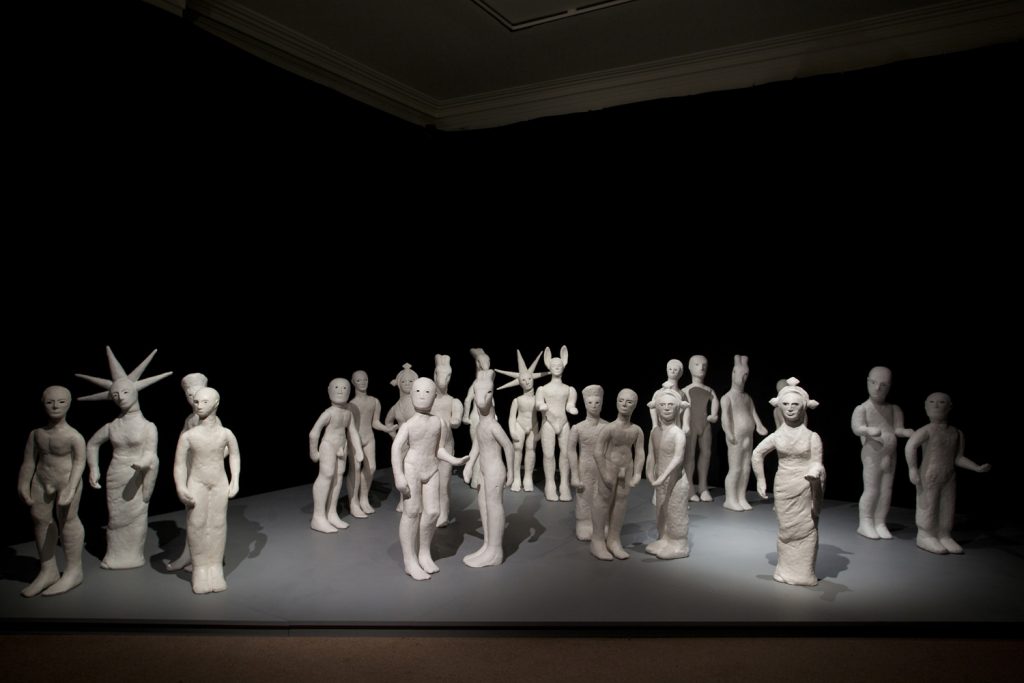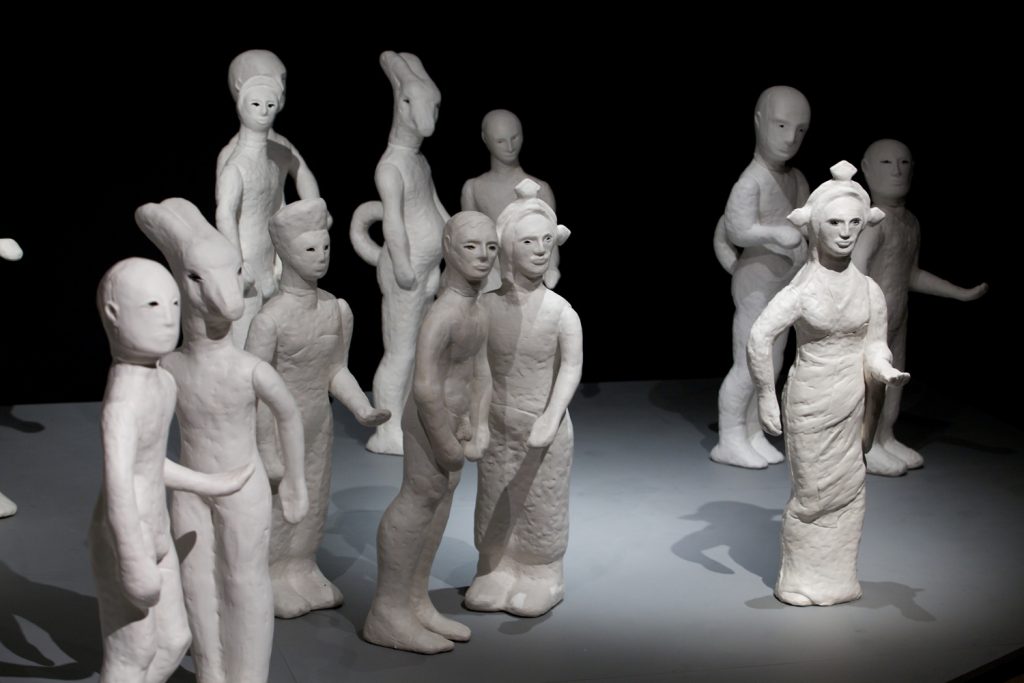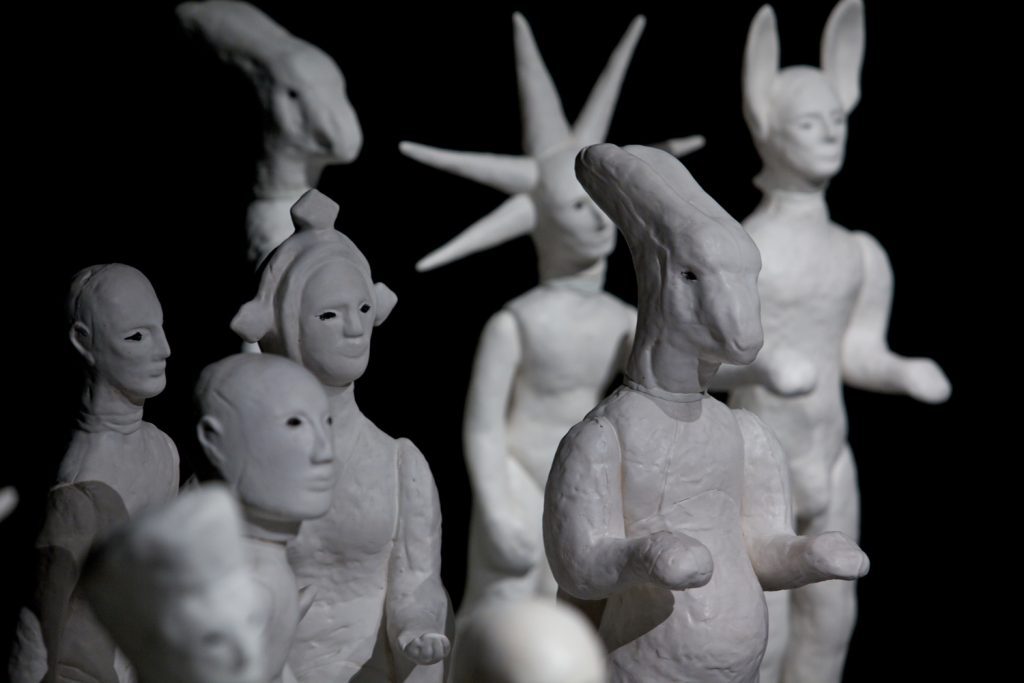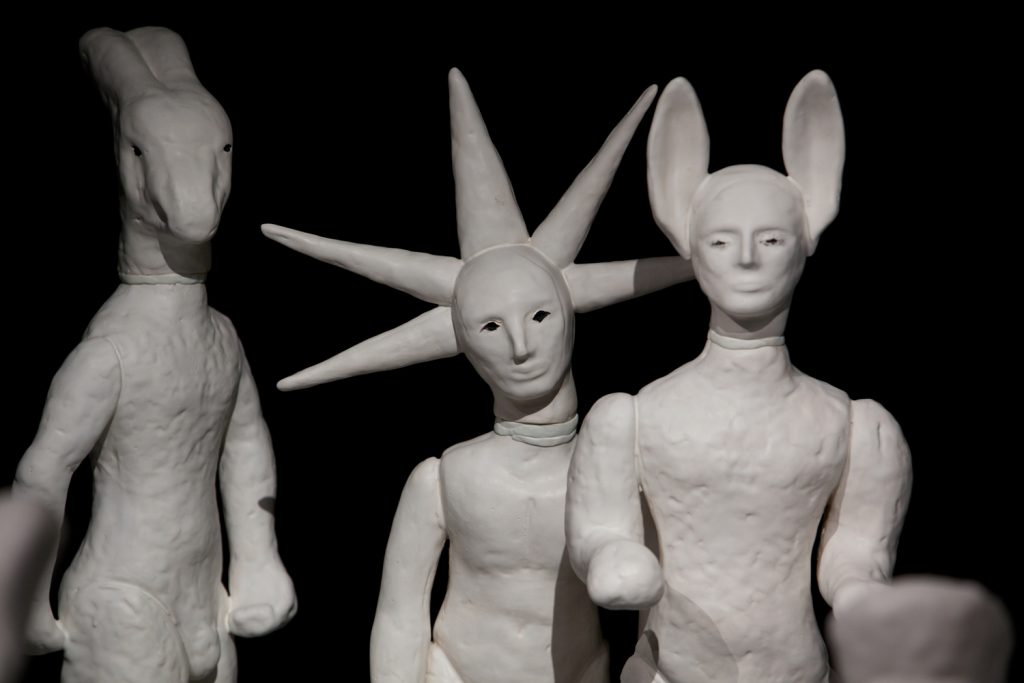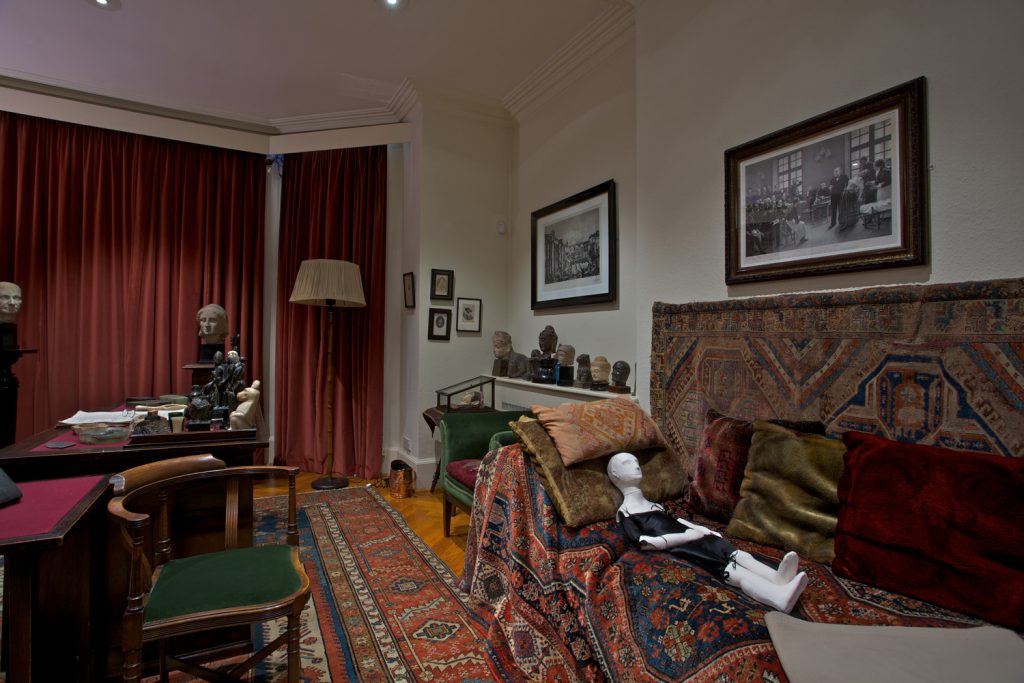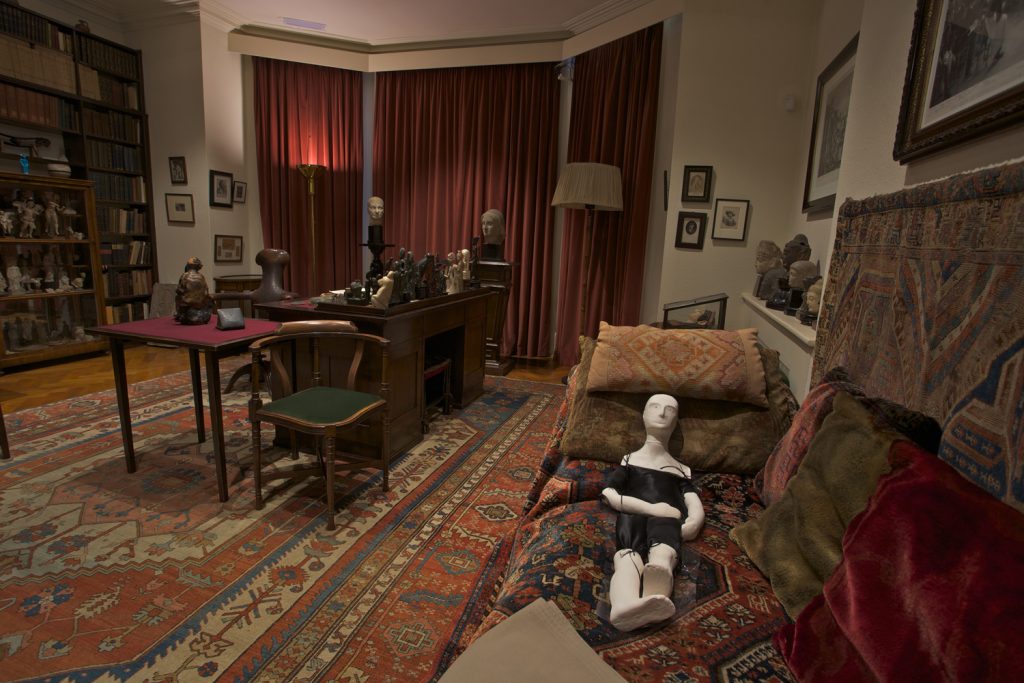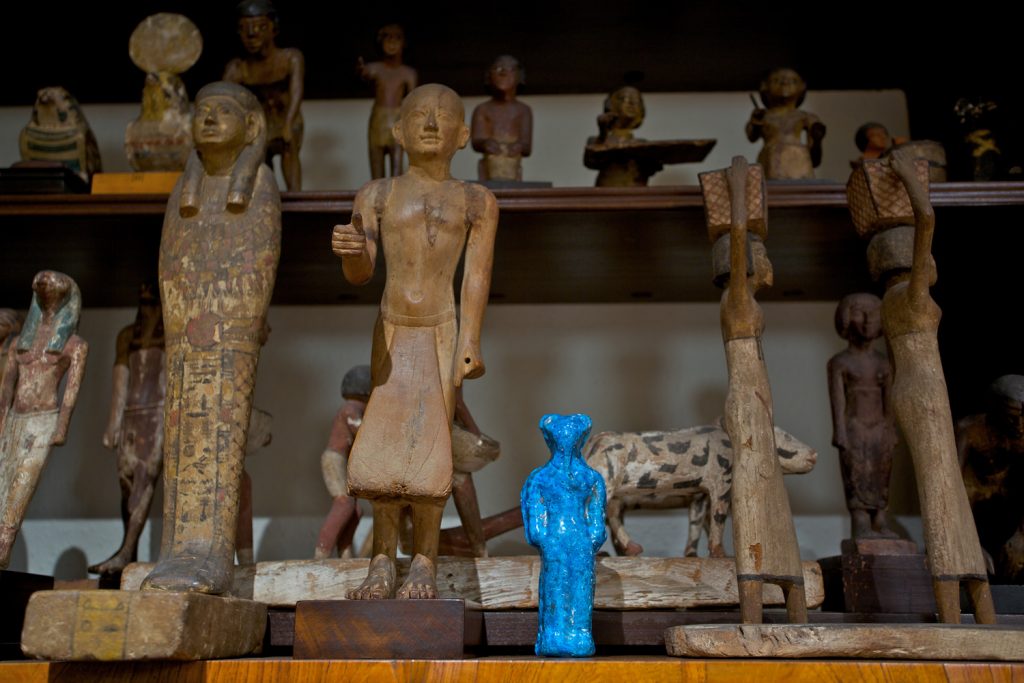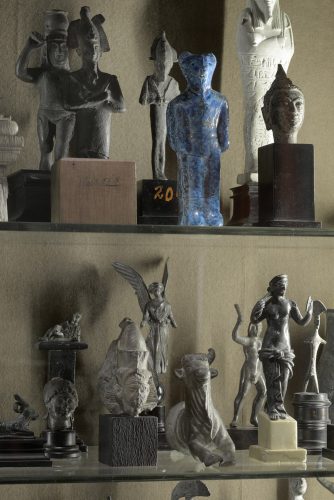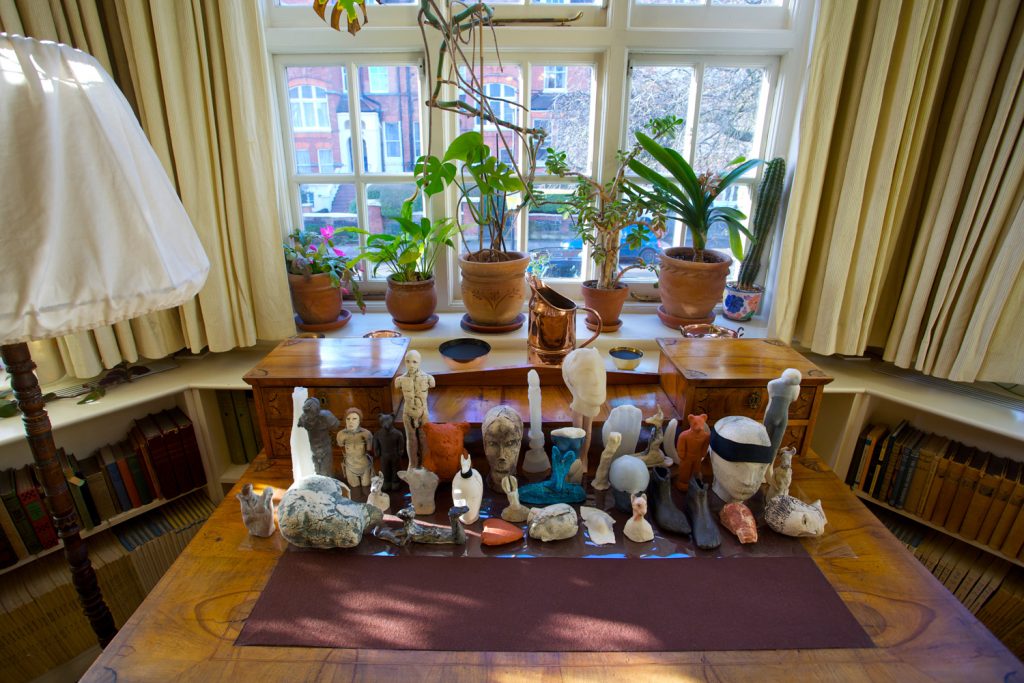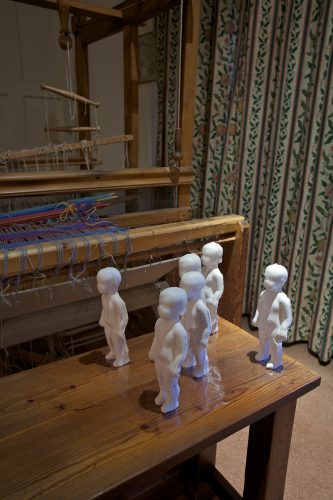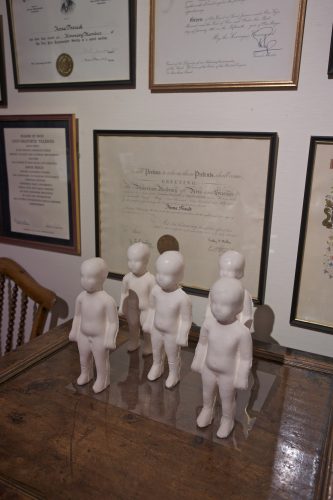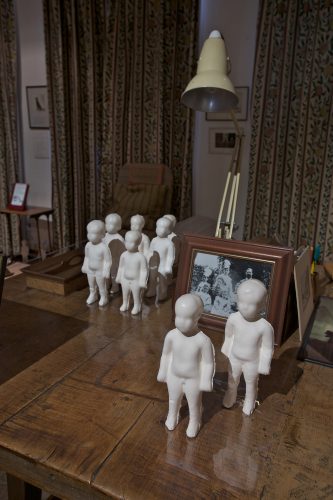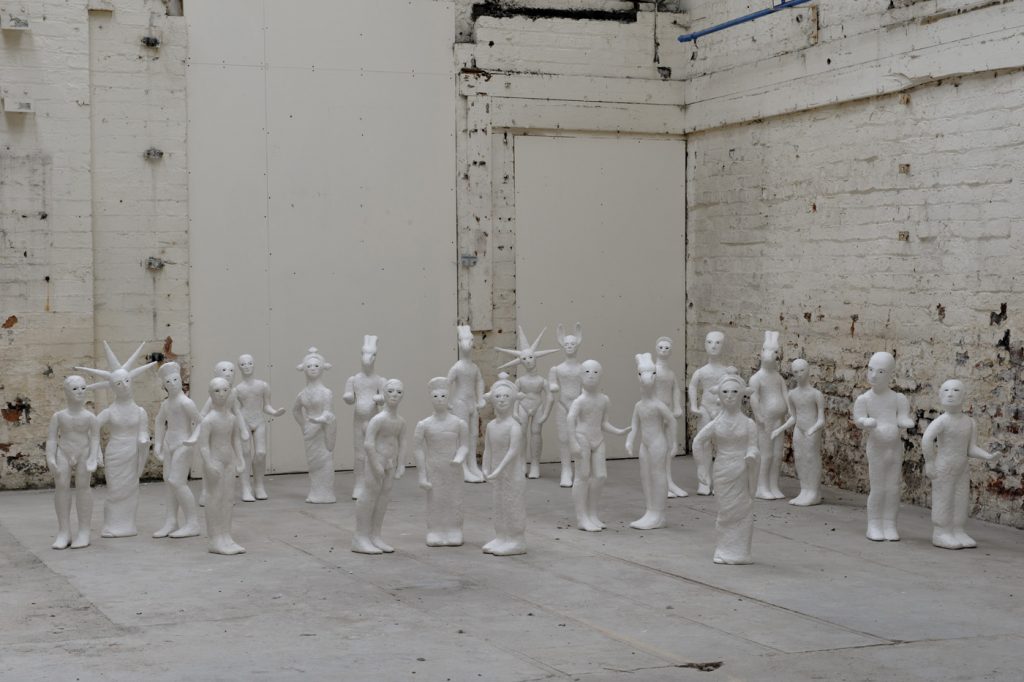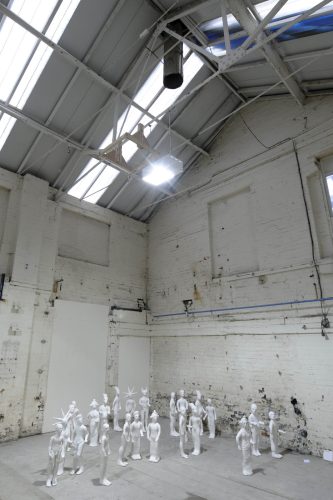The exhibition entitled DreamWork, at the Freud Museum in November 2012 was part of a 3-year Arts and Humanities Research Council project, Ceramics in the Expanded Field, funded through the University of Westminster. The project aims to explore the relationship between ceramic art intervention and museum collections.
The Freud Museum in north London is the house in which Freud spent the last 18 months of his life. The interior of the study where he worked contains his large collection of ceramic and bronze archaic figurines which reflect his deep interest in the discipline of archaeology and his use of the archaeology metaphor as a way of making the psychoanalytic process more accessible to the general public. This installation of ceramic and mixed media figures was inspired by this collection and the narratives they can suggest, as well as by an interest in the importance of objects in human lives and how we project emotions onto them. Drawing parallels between falling asleep and leaving the museum or studio, the work suggests that inanimate objects come to life when we are not looking and may become animated in ways that are beyond our control, like dreams.
The central work Sleepover was later shown in the derelict Spode factory’s China Hall, a challenging large-scale space which served as a regular home to the British Ceramics Biennial in Stoke-on Trent. The meaning and resonance of this work was changed fundamentally by this context, prompting further ideas about the nature of space and its effect on content.


